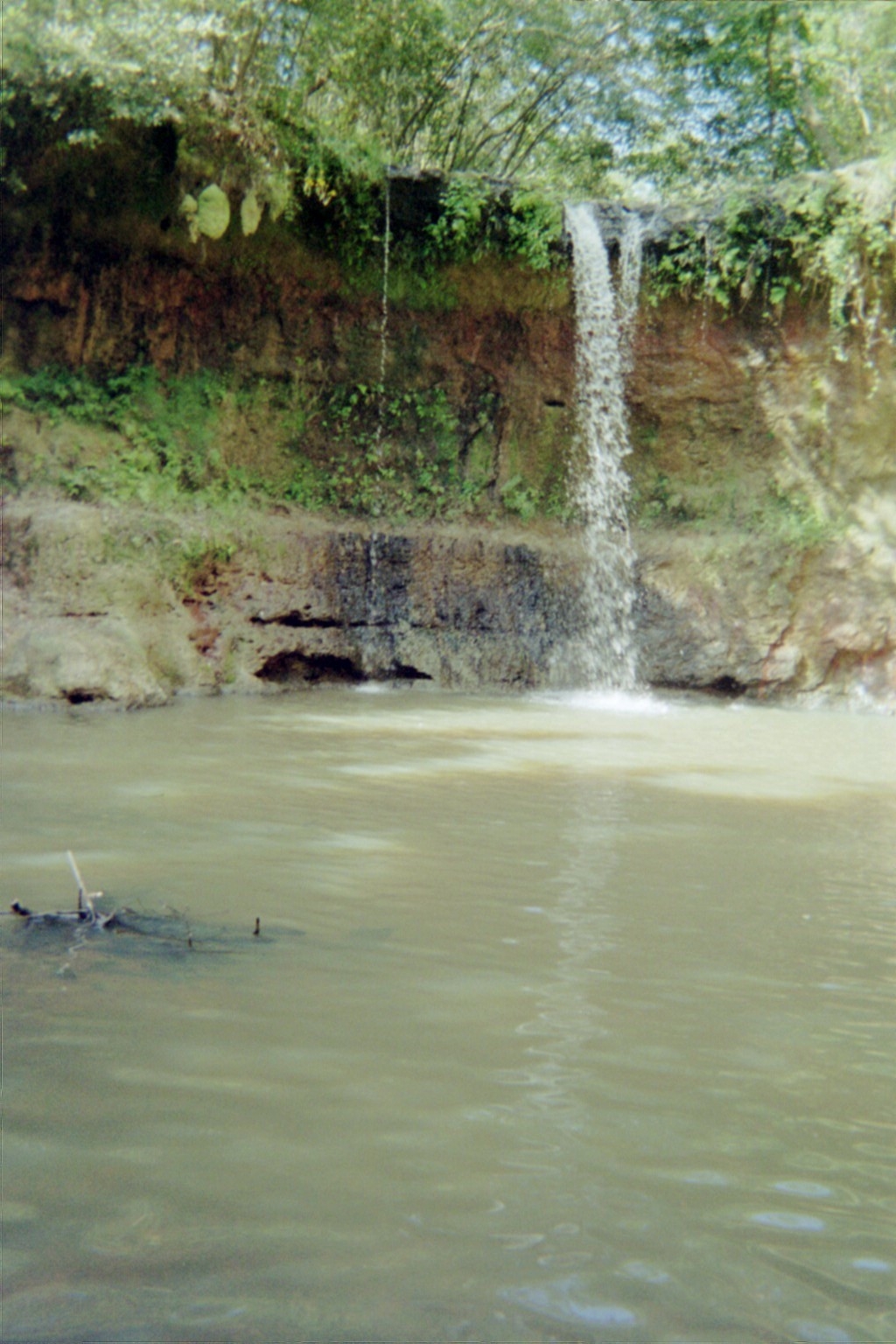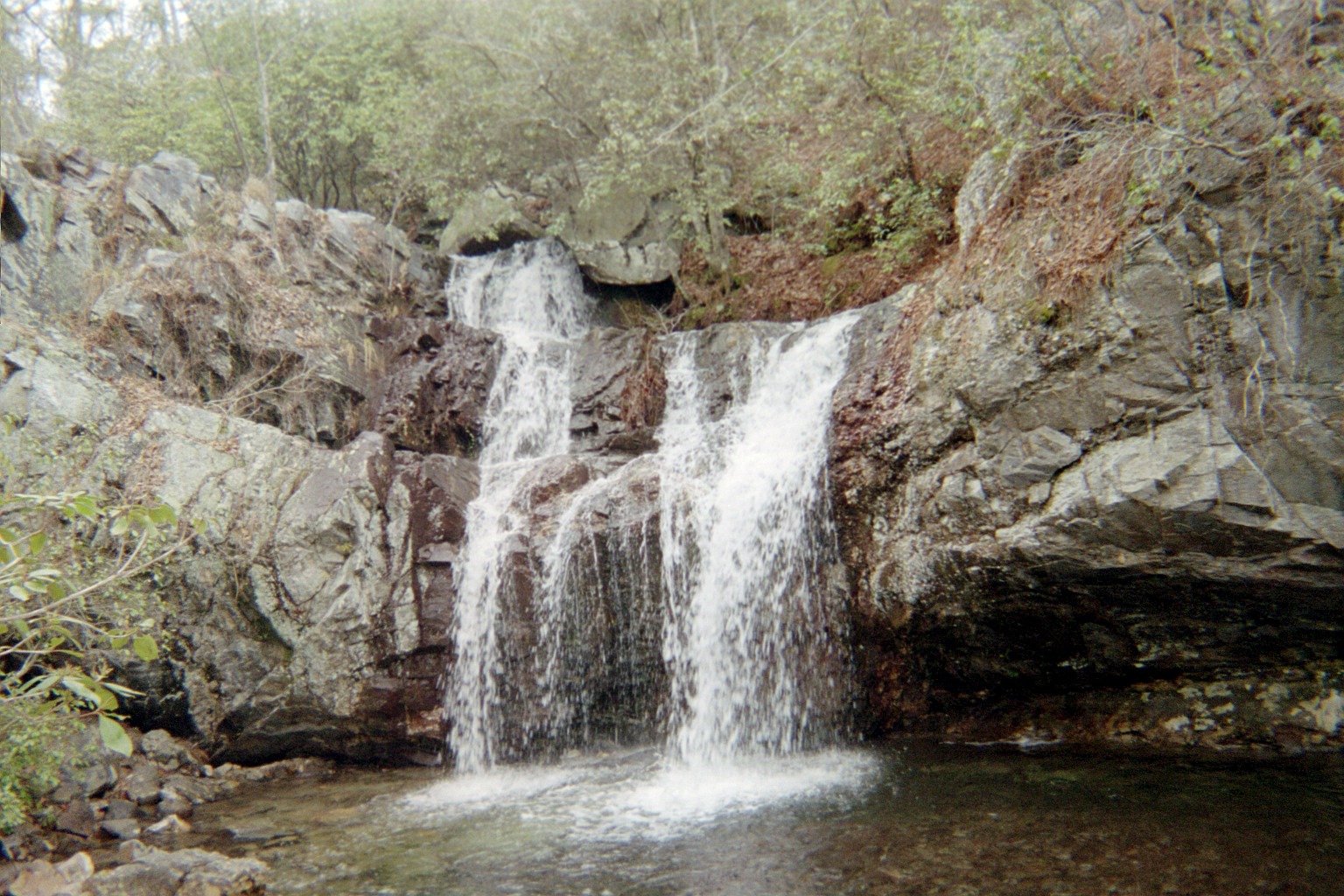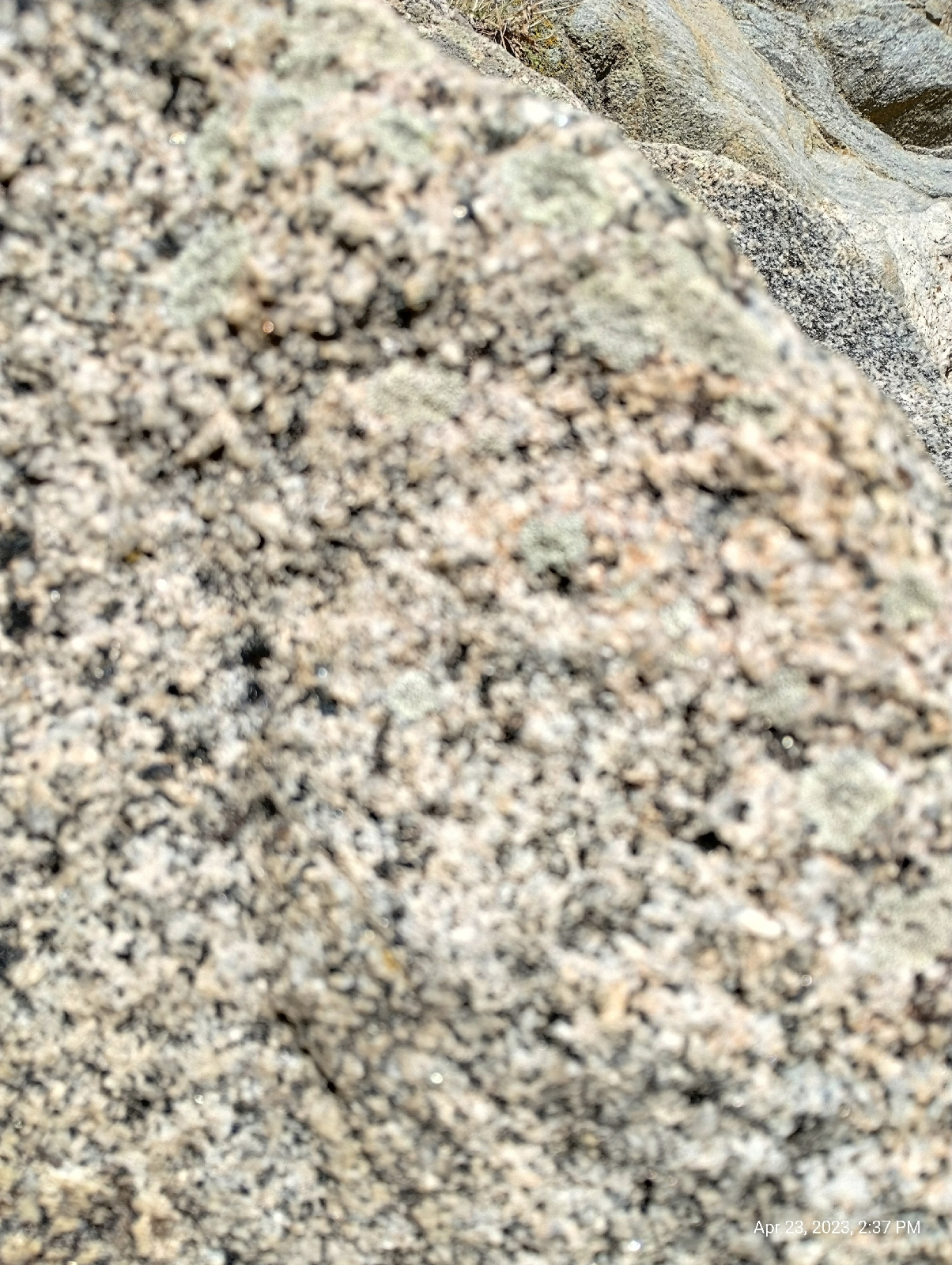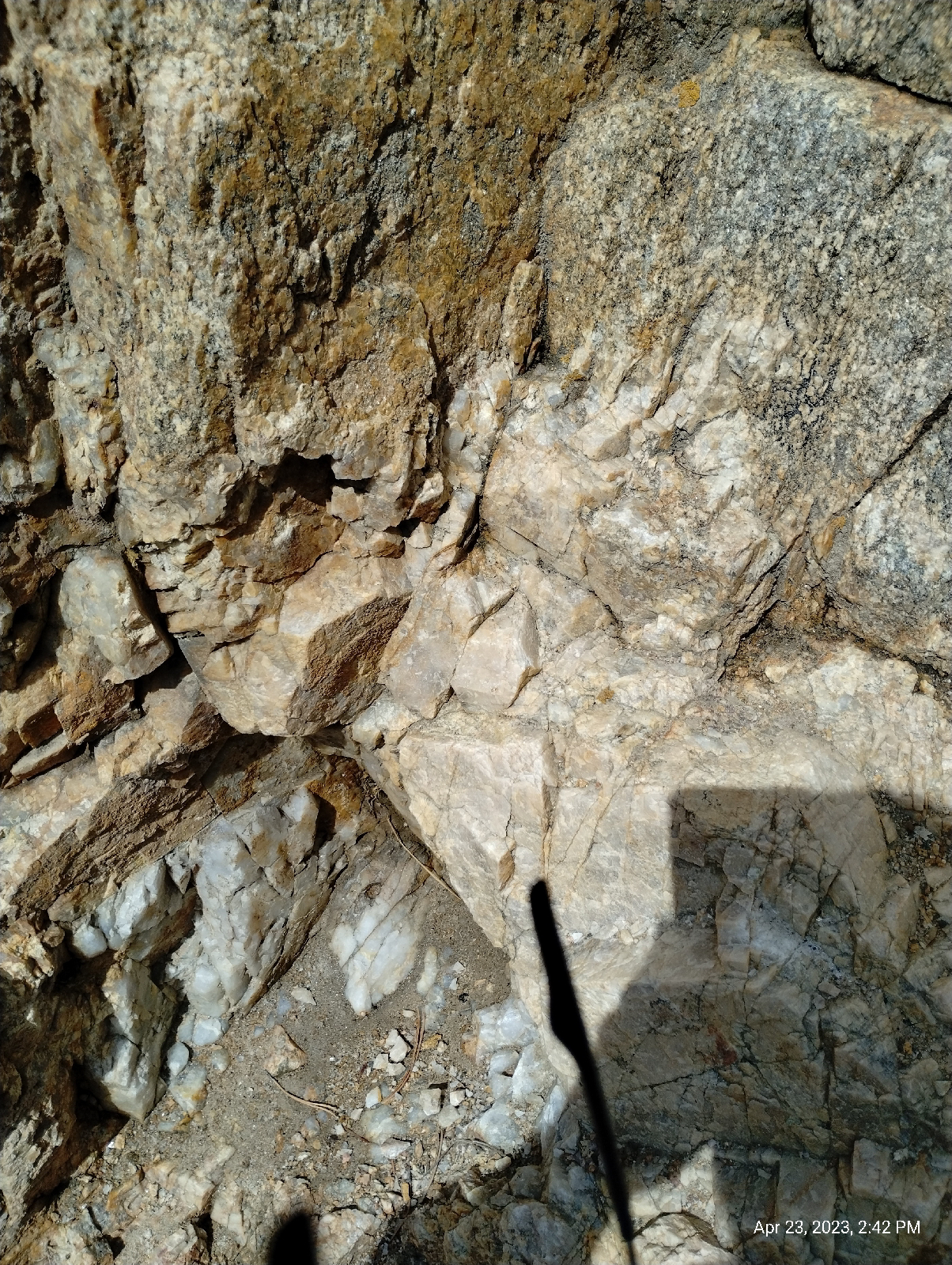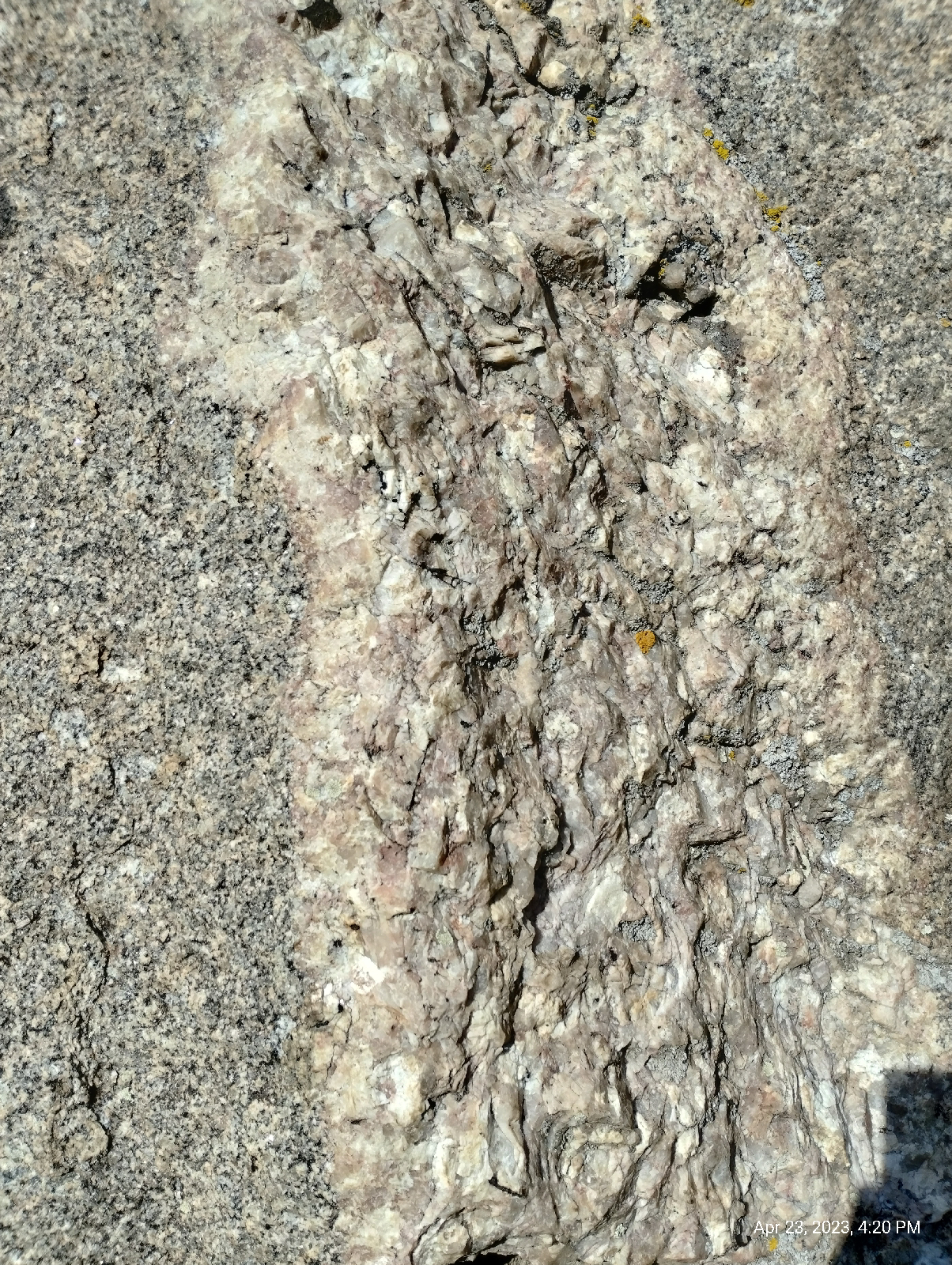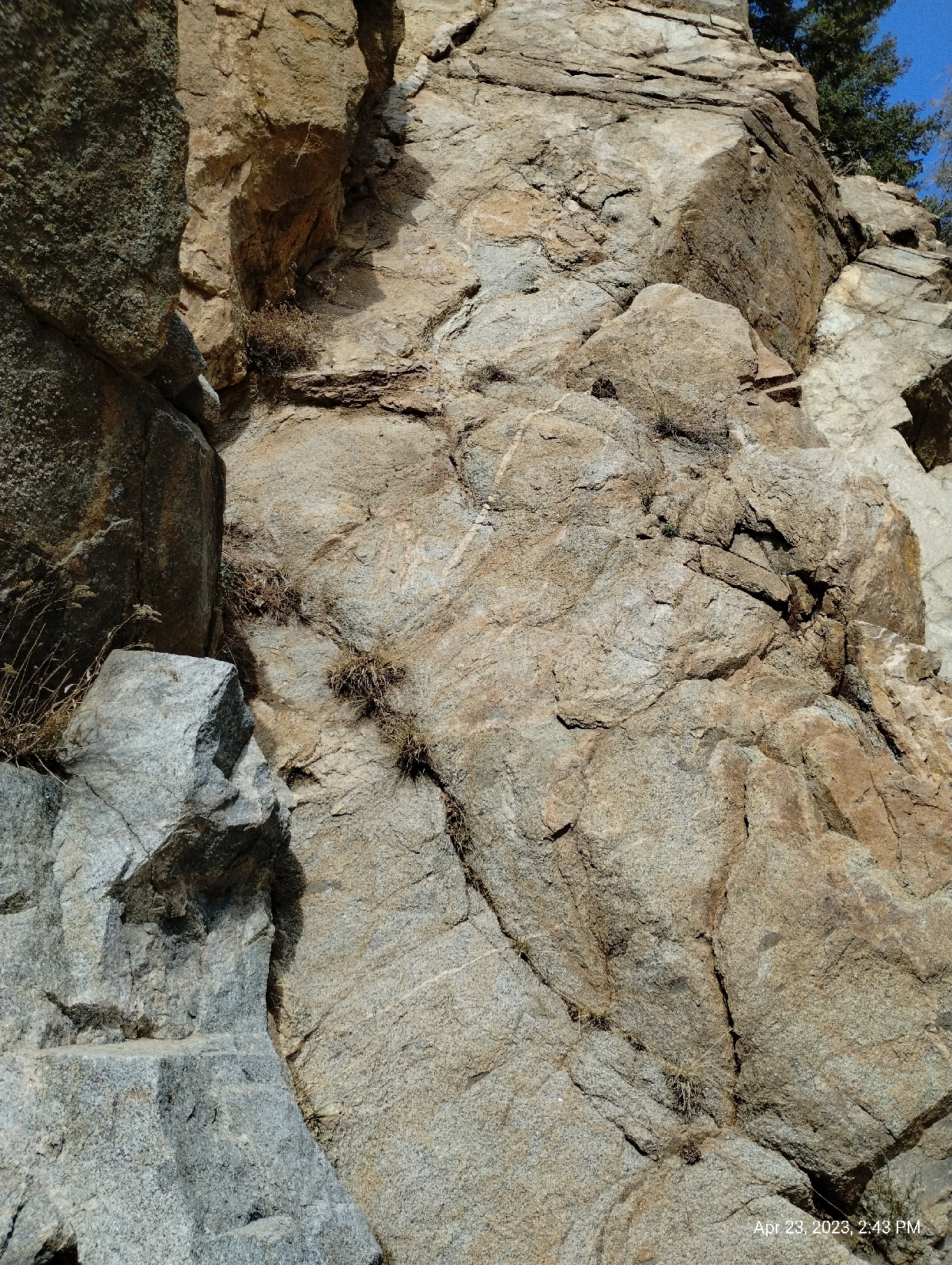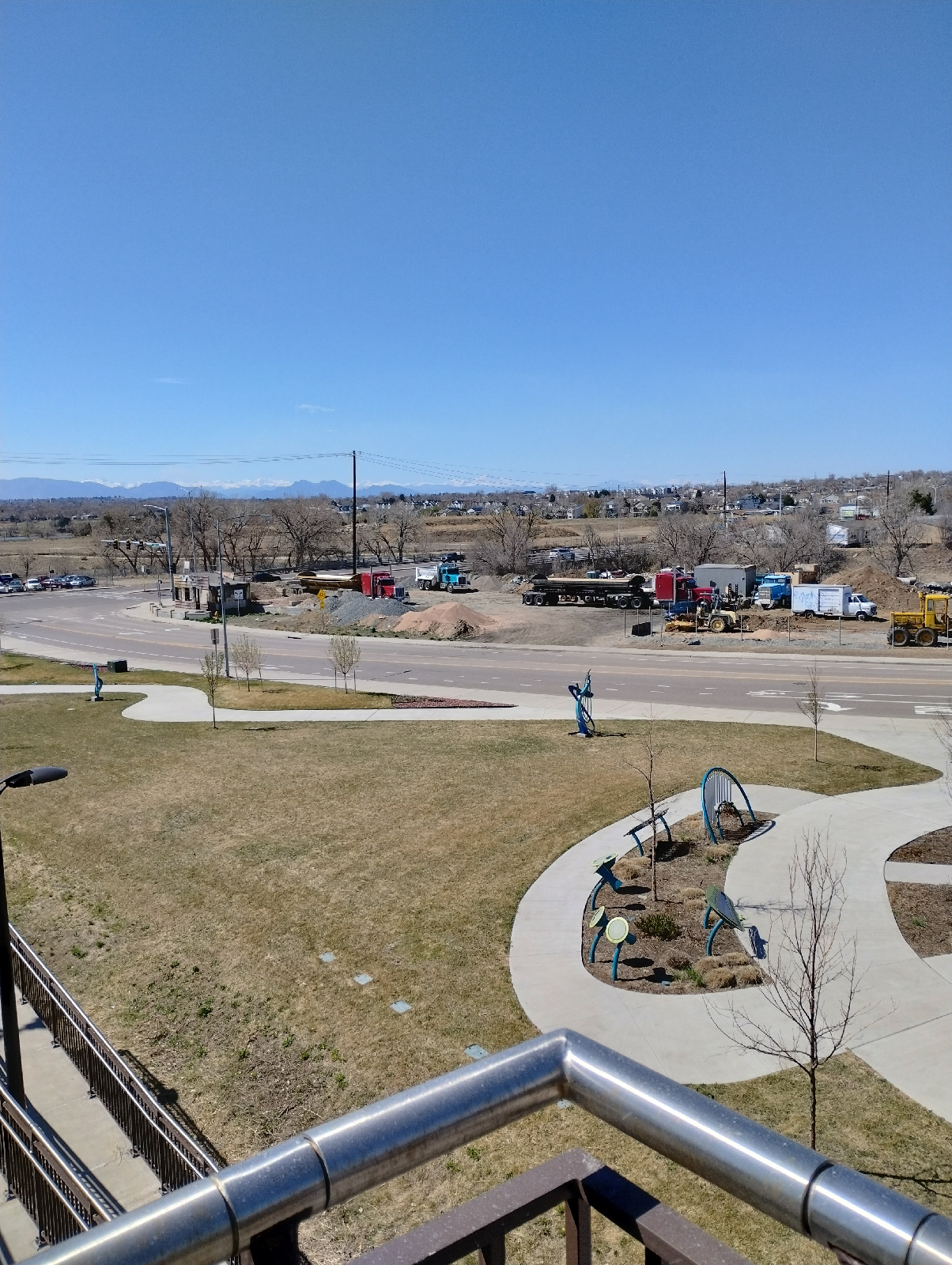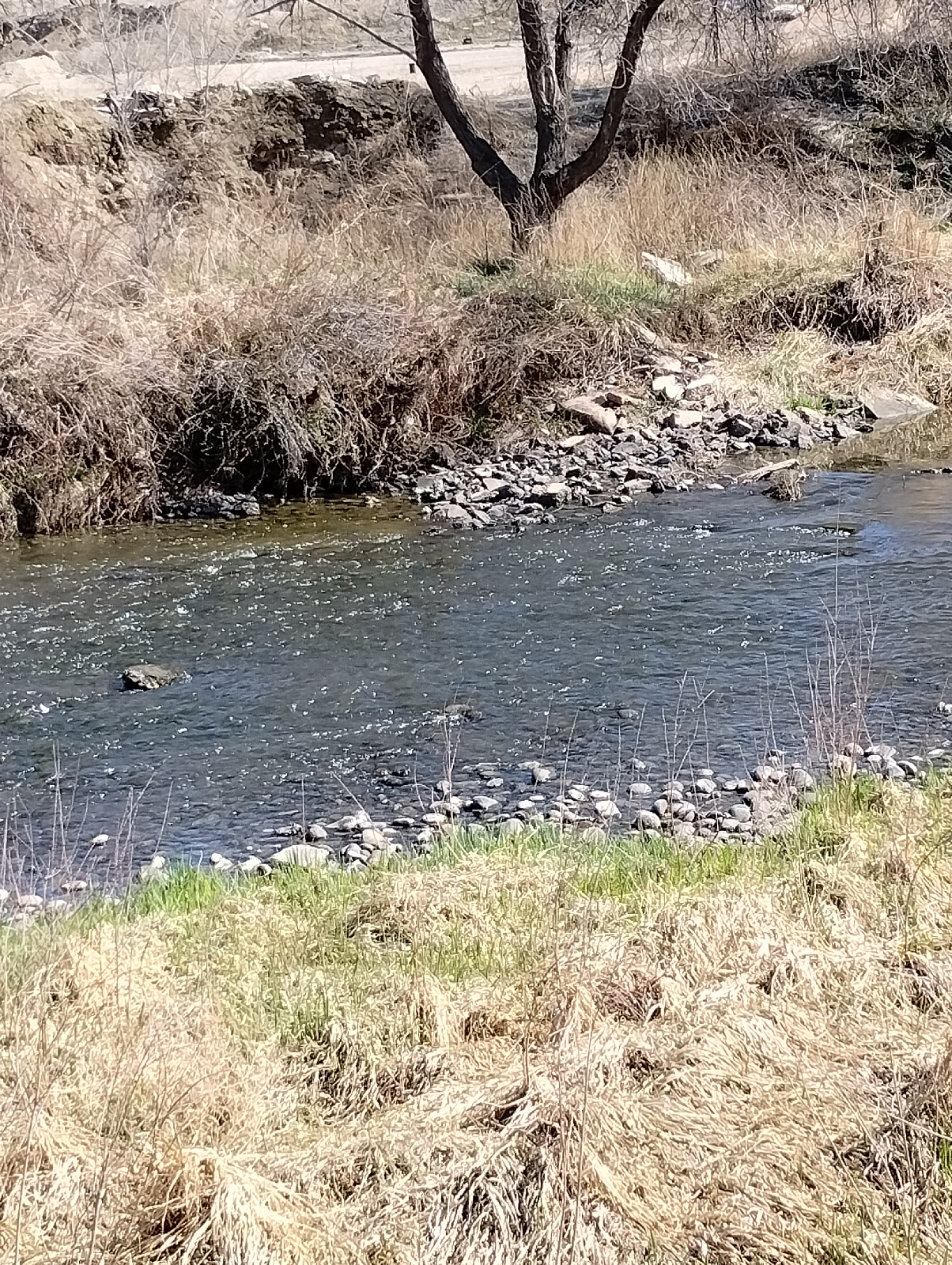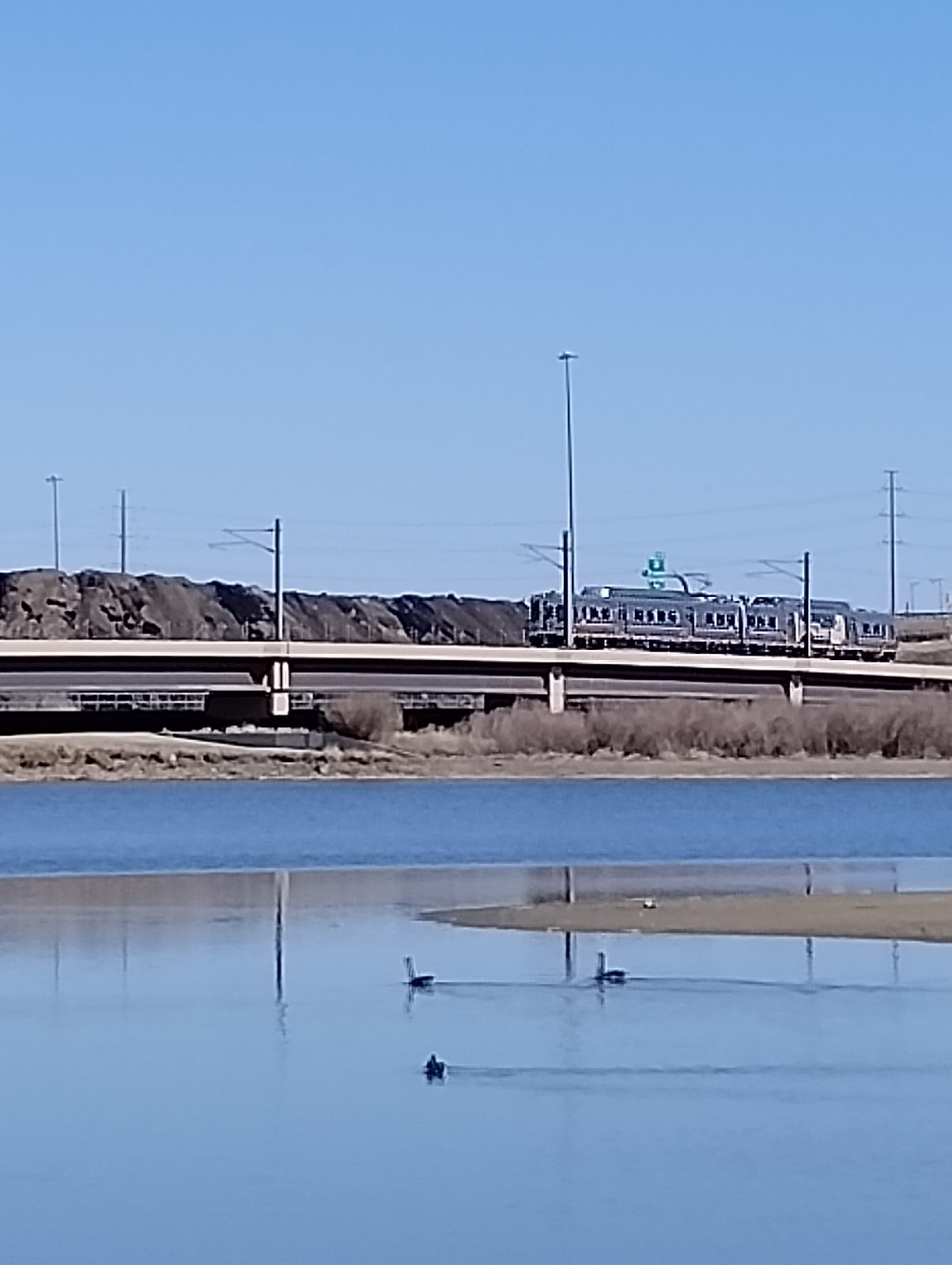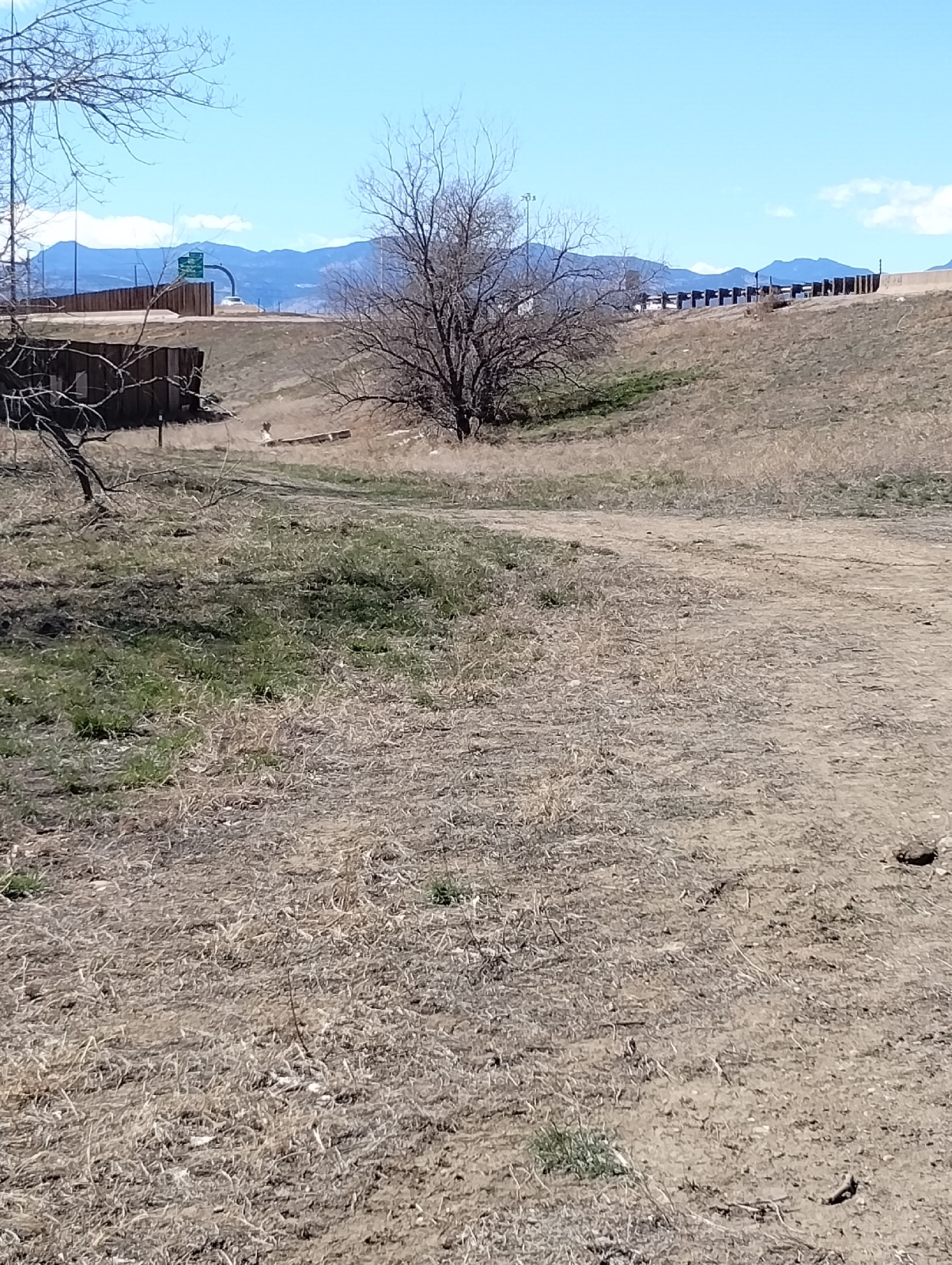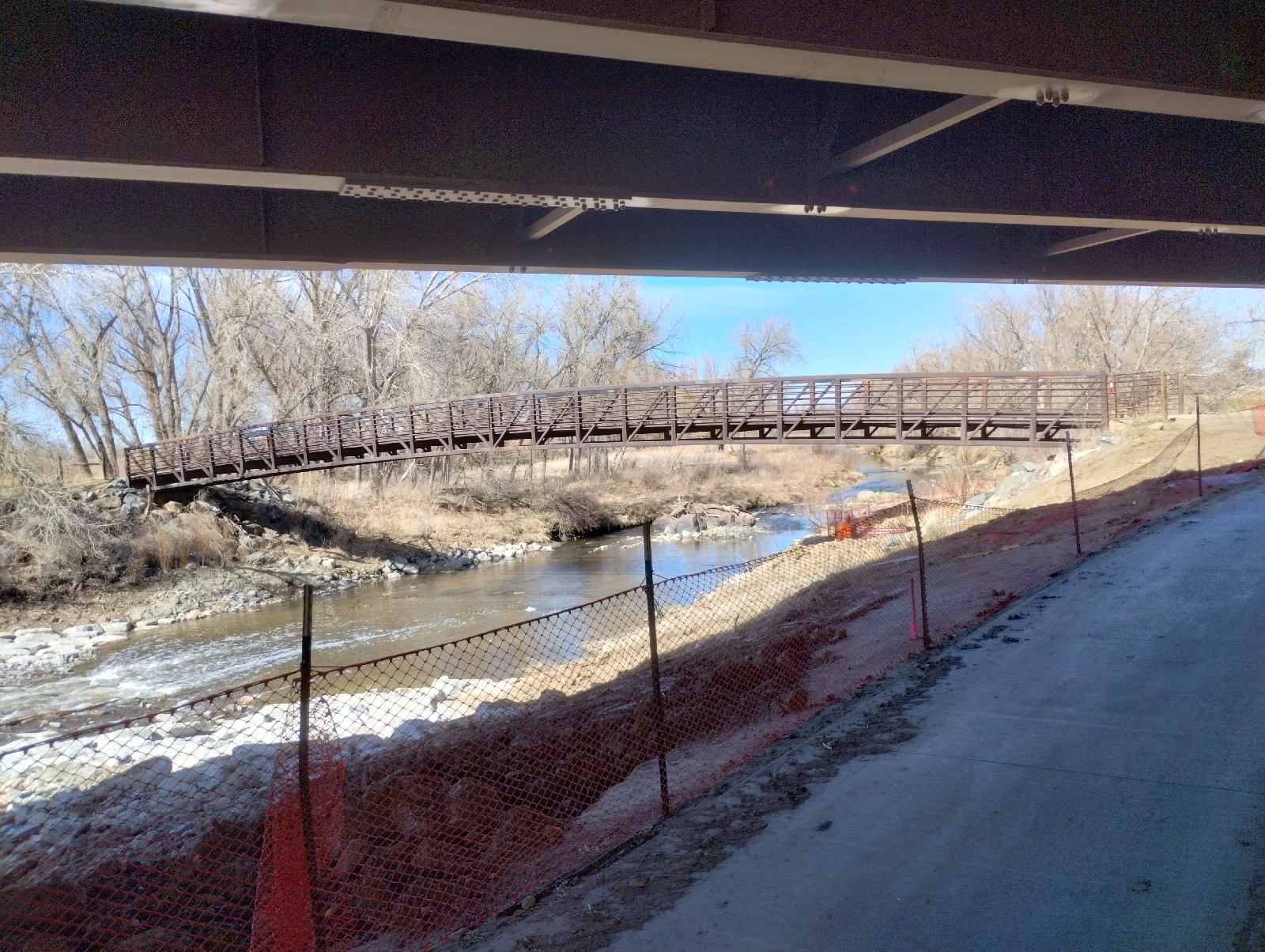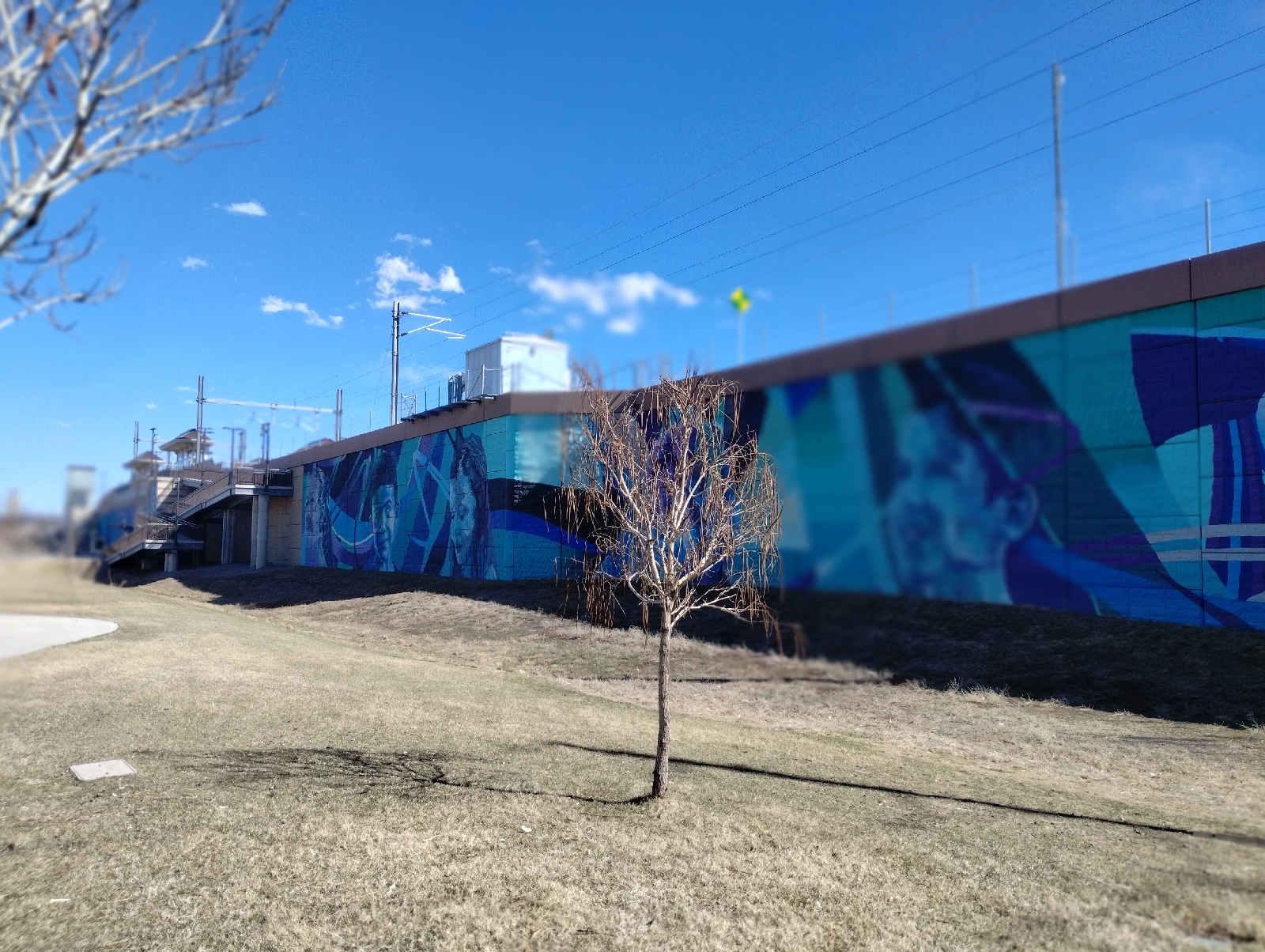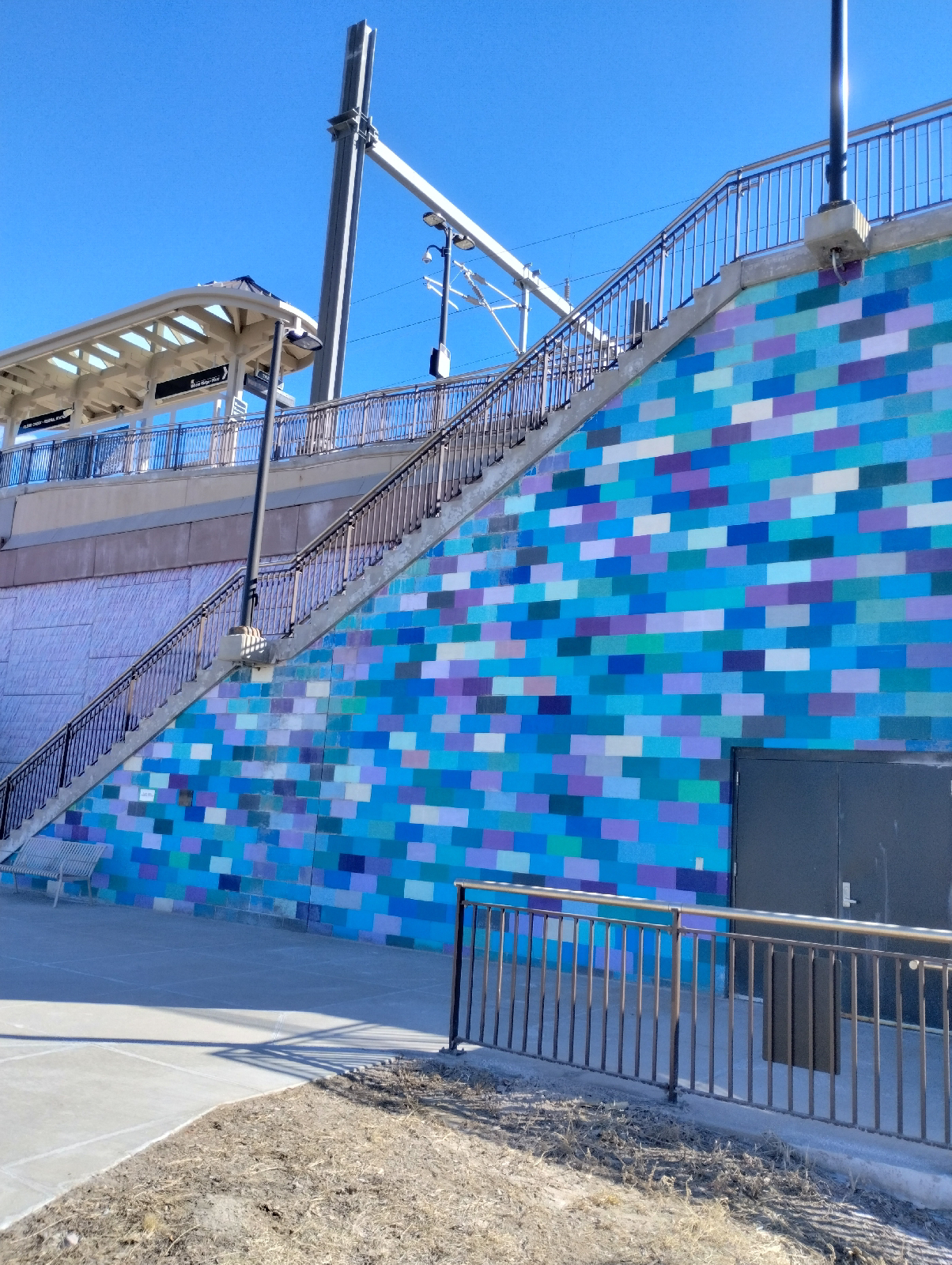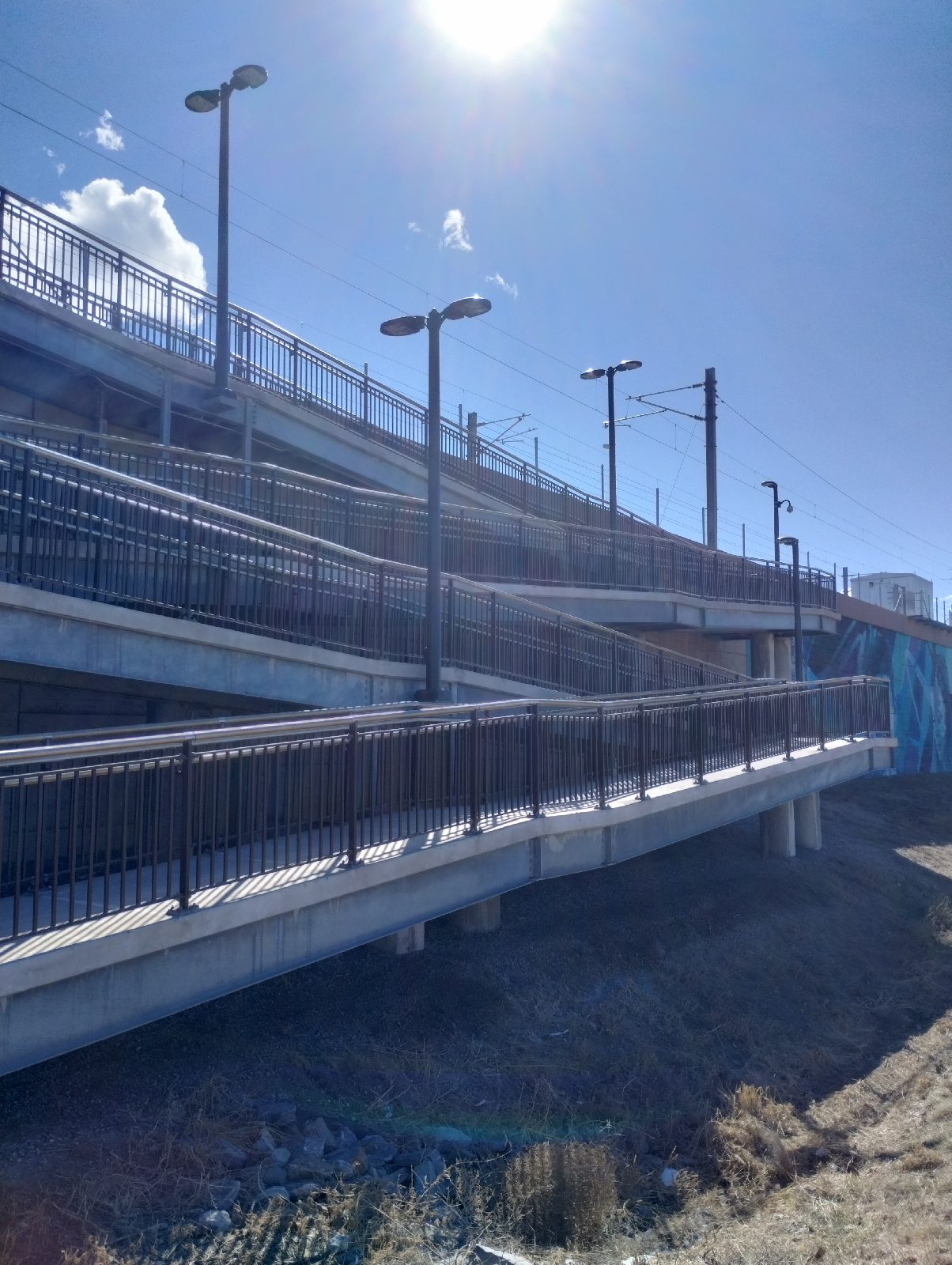And as land rises, water runs off. It establishes a course and keeps to it, eating ever deeper into the land beneath it. The spinning Earth moves out from under it making it squirm. Water is ticklish. It wiggles and vibrates. It meanders.
And when it gets to the edge of a bulge, it falls. It is the visible embodiment of gravity. Rarely does it go against gravity. Old Faithful comes to mind, and the Upside Down Falls in Hawaii. But, inevitably, down it comes.
Waterfalls travel. They travel down through the rock they flow over to form valleys and canyons, and they travel upstream. For instance, 12,000 years ago, Niagra Falls was 7 miles closer to Lake Ontario than it is today and it continues to move upstream. Waterfalls travel upstream until they have carved out a path of low slope along the length of the stream
Waterfalls have personalities. They're all different. Let me introduce you to some of the waterfalls I've known.I regret the number of photographs that I've lost over the years but images of all these falls are on the Internet. I'll share links but, remember, links aren't forever. If one goes away, just use your browser to find another.
I left the Southeastern United States only a handful of times, so I haven't seen the tallest waterfall in the world, Angel Falls in Venezuela (https://en.wikipedia.org/wiki/Angel_Falls?wprov=sfla1), or even the tallest in the coterminous U.S., Colonial Creek Falls in Washington State (https://alchetron.com/Colonial-Creek-Falls). There are world famous falls like Niagara falls (https://en.wikipedia.org/wiki/Niagara_Falls?wprov=sfla1) and Cumberland Falls (https://en.wikipedia.org/wiki/Cumberland_Falls?wprov=sfla1) that I haven't seen. There are things that are debatable that I, personally, distinguish from waterfalls. If they were included, the absolutely tallest waterfalls on Earth are underwater, where dense cold water currents drop from continental shelves to very deep ocean floors. I also don't consider something a fall if it doesn't drop vertically. Cascade Falls in Colorado (https://www.coloradoguy.com/cascade-falls/chaffeecounty-co.htm) is a cascade, not a fall. Those excepted, I can give you examples of all the kinds of waterfalls.
Usually, when people envision a waterfall, they think of the plunge type, where the falling water loses contact with the rock wall behind it.
Waterfall in River Falls, Alabama. (see the blog for Wednesday, August 9, 2017, Your Adventure)
People don't usually talk about going to Alabama on vacation but there are many things to recommend it, especially for outdoor enthusiasts and geotourists. It packs a lot in from the mountains, caverns, and space history in the northeast and canyons in the northwest to surprising mineral finds in the hilly central lands to the southern plains, swamps, and beaches, the parks are well maintained and there's a brochure, "One Hundred Dishes to Eat in Alabama Before You Die" that you really should reference.
I've heard that there are more waterfalls in Alabama than any state in the contiguous United States. I'm suspicious. Officially, Washington State has that distinction. I've also seen a map from an study that said that Alabama has 112 waterfalls. The authors should actually go to Alabama.
At one time, I conceived of the project of surveying all the waterfalls in Alabama. I quickly realized my error. I couldn't live long enough to visit them all.
A very surprising thing about Alabama is the number of waterfalls on the seaboard side of the fall line.
A fall line is an geographic boundary that separates the hard igneous and metamorphic rocks of a highland area from the softer sedimentary materials of a coastal plane. When rivers cross that boundary, they will often dig in and gouge out a waterfall. Above the fall line, waterfalls are often common; below, they're usually rare. For instance, in Georgia, waterfalls are scattered throughout the mountains all the way down to the fall line that passes through Columbus and Macon but try to find one to the south.
Across the Chattahoochee River in Alabama, nature made a joke. The fall line runs through Montgomery and Selma and then turns north to Tuscaloosa, but there are several significant waterfalls to the south as far as Mount Vernon, just a little over 30 miles north of the Gulf of Mexico. The Alabama Piedmont stops 200 miles to the north in Selma.
The waterfall shown above is in River Falls, Alabama near Enterprise. It's located on a tributary of the Conecuh River. A lot of the falls south of the Alabama fall line look like that. The ground is little more than mud so the stream has little difficulty cutting through it. Here, there's a thin, sandy, resistant layer capping the clayey stone of the coastal plain. The wall behind the fall is soft and easily undercut by flooding. The mists rising from the splash pool soften and oxidize it, speeding erosion. Flash floods are not rare here.
I suspect that this waterfall started out as a "pothole" in the bed of the creek and just widened out, drilling down into the landscape.
In a horsetail waterfall, the water maintains contact with the bedrock.
I haven't seen many river falls like Niagara or Cumberland Falls. Fact is, there are not a lot since dams often get built over them. Check out Great Falls in Montana (https://en.wikipedia.org/wiki/Big_Falls_%28Missouri_River_waterfall%29?wprov=sfla1). I've seen the bottom few cascades. The rest is no more. That monster almost ended Lewis and Clark's expedition to the Pacific Ocean. Also, many river falls have been around so long that they have worn themselves down to nothing.
Little River, in northeast Alabama has the distinction of being a river that runs it's entire course on a mountain. It, in fact, cuts down through Lookout Mountain which begins in Tennessee and then slants down through Georgia into Alabama. It is protected by the Little River Canyon National Preserve.
The river drops into the canyon here at Little River Falls. The rocks are hard sandstones of the Pottsville formation. When I say that they are Pennsylvanian, that might ring a bell. While the Fountain formation out west was being laid down as sand in a relatively quiet ocean, the Pottsville formation was being washed out of a much older Appalachian Mountains into a depression in the earth, a wrinkle caused when Europe and Africa crashed into North America's east coast. Lookout Mountain is a feature of the eastern Piedmont much as the foothills of the Rockies are features of the Colorado Piedmont. The Appalachian Mountains, now worn down to their roots, pretty much end where the Tennessee River cuts across northern Alabama. The Piedmont slopes far down to Selma in south Central Alabama. The last two named rises, Parker Mountain and Mount Baber, are just outside Selma. Hills to the south of Selma are the result of erosion by the many streams in southern Alabama.
The tallest waterfall in the state, Grace's High Falls, at 134 feet, is also in the Little River Canyon.
A cataract is a large waterfall. As an example, DeSoto Falls, shown above, is upstream from Little River Falls. It cuts through the same tough Pottsville formation that predominates on Lookout Mountain.
An overlook is breathtakingly (downright scarily) posed over the 107 foot fall, leading to a staple in the stone wall. A staple is just what it sounds like, only several thousand times bigger. It once attached part of a hydroelectric conduit from the dam (which is still upstream from the falls) to the wall of the canyon. There wasn't a guard rail there when I took this picture so be careful. It's a long way down.
Arthur Abernathy Miller built the dam in 1925 to generate electricity to nearby cities like Mentone and Fort Payne. He had already supplied electricity to cities in Virginia and West Virginia, and this was the first hydroelectric dam in Alabama. He eventually sold the project to Alabama Power and the generator is long gone.
This waterfall is also a multi-step falls. Below the 20 foot high dam, the river drops over a rock shelf about ten feet.
One of my favorite multi-step waterfalls is High Falls between Talladega and Ashland, Alabama. Here a stream cascades over the metamorphic rocks of the Talladega group in three drops. Each part has it's own splash pond. Also see the Tuesday, February 5, 2019 blog, "The long and short of it" for more pictures of this beautiful waterfall. The stream drains water off the slopes of Alabama's highest mountain, Mount Cheaha (2407 foot summit).
When a waterfall drops in stages without intervening splash pools, it's usually called a tiered waterfall.
Block falls are places where large streams or rivers drop over a rock shelf. Catoma Creek is a broad tributary of the Alabama River along the southern city limits of Montgomery, Alabama. Catoma Creek Falls (https://www.facebook.com/nomadicleprechaun/posts/catoma-creek-in-montgomery-al-actually-did-pretty-good-while-not-as-big-as-my-mi/681898702262173/) jumps a low (maybe ten foot high) self of sedimentary rock. Just looking at the rock, it's evident that it's loaded with fossils. The area was also the site of a Native American town.
In a segmented waterfall, the water goes over a ledge in several distinct streams.
Cheaha Creek, in Cheaha State Park in Alabama, splits into several streams at Devil's Den.
A fan waterfall comes off its rock ledge as a relatively narrow dream but widens as it falls.
One of my favorite hikes is U.S. 64 between Highlands and Franklin, North Carolina. It parallels the Cullasaja River, which, for the first ten miles pours over one rock shelf after another. Highlands itself is surrounded by outcrops of igneous material, but the rest of the 20 mile route is over metamorphic material and the tortured rock is reflected by the path of the river. The last 10 miles is more serene, looking like a postcard of an alpine valley, chalets and all.
The Cullasaja River begins at Sequoyah Lake, just north of Highlands, and starts down through the mountains into the Little Tennessee River valley. The first waterfall is Bridal Veil ( https://www.romanticasheville.com/bridal_veil_falls_highlands.htm) on a tributary creek. It's distinctive because a loop of the main road curves around in back of the waterfall. The rock is loaded with rhodolite garnet, an unusual, rose colored intermediate between pyrope and almandine. We also used to find carnivorous sundew plants on the moist cliff beside the falls.
Close by, the main river channel takes the Cullasaja over Dry Falls (https://en.wikipedia.org/wiki/Dry_Falls_%28North_Carolina%29?wprov=sfla1), a thundering cataract with a trail that leads visitors behind the curtain of water.
After a few more miles of almost constant cascades, the river enters a slot canyon, a place where the broad river squeezes through a narrow trough in the rock. It emerges at the edge of 200+ foot Cullasaja Falls (https://en.wikipedia.org/wiki/Cullasaja_Falls?wprov=sfla1). It takes about two tenths of a mile to fan out over cascades to finally plummet into the valley.
It's not easy seeing the falls from the road. You have to look quickly as I.S. 64 curls around a rock wall with a low rock curb dropping to the valley floor far below. This part of the hike is terrifying. There is a tiny pull off a little further north where you can park and get a good look.
I had seen photos of the falls from the bottom so I knew that there had to be a way down (unless they let bikini clad ladies down in there by helicopter). On a solo hike, I started looking around the overlook and, sure enough, there was a narrow trail, almost invisible, passing through some bushes to a precipitous rock face with a cable strung across that hikers could hold on to in transit. On the other side, the trail continued in switchbacks down to the base of the falls.
My first thought was "why here? Half way between Highlands and Franklin," but, of course, in a few thousand years, it will move a mile or so south and, eventually, it will build back into and annihilate Sequoyah Lake.
Look back at Boulder Falls above. It's also a slot waterfall.
Some waterfalls drop through slots in a rock wall. Raven Cliff Falls ( https://www.atlantatrails.com/hiking-trails/hiking-to-raven-cliff-falls) in northern Georgia and the waterfall in Roaring River State Park in Missouri ( https://www.tripadvisor.com/Attraction_Review-g44216-d2265033-Reviews-Roaring_River_State_Park-Cassville_Missouri.html) are good examples.
Hanging falls look similar for different reasons. Glaciers grind out broad U-shaped valleys and tributaries that once flowed down gradual slopes to a primary river suddenly have to jump off a high cliff. Often, the tributary itself froze for a time to form a tributary glacier and, when it receded, it left its own U-shaped valley.
Bridalveil Falls in Yosemite Park in California (https://en.wikipedia.org/wiki/Bridalveil_Fall?wprov=sfla1) is a good example of a hanging waterfall.
In addition to the regular types of waterfalls, there are some weird variations.
Many caves feature waterfalls, either falling from the surface via a sinkhole or totally underground, like Ruby Falls (https://www.rubyfalls.com) inside Lookout Mountain in Tennessee.
There is even an upsidedown waterfall in Hawaii, Waipuhia Falls (https://mauihacks.com/see-the-waipuhia-falls-the-upside-down-waterfall). It falls so far, and the wind is consistently so strong, that the water doesn't reach the bottom. It just turns into spray which is blown back up.
One thing that draws me to waterfalls is their fascinating variety. They're uncommon on plain areas of the Earth, but in most places, there will be waterfalls a days drive away. Are there any near you? What kind of landscape do they inhabit? How do the rocks and the water work together to produce their distinctive natures?


